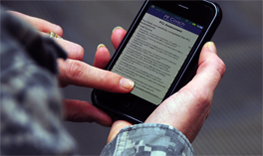Telehealth is just as good...

My colleagues and I recently published a meta-analysis which compared synchronous telehealth therapy to standard care for the reduction of depression symptoms. For those unfamiliar with the term, telehealth is the use of technology to connect patients and providers separated by distance and time. Synchronous telehealth therapy is the use of videoconferencing or teleconferencing to conduct therapy with patients. Standard care, on the other hand, may involve face to face in-office therapy or “care-as-usual” – the therapy that a patient would normally receive in a general practitioner office.
We specifically chose to look at synchronous telehealth because it is a growing a trend in care for those in rural areas and/or for those who may feel stigma if seen receiving therapy. What we found was that there were no statistically significant differences between the effectiveness of synchronous telehealth therapy and regular (non-telehealth) care for the reduction of depression symptoms. In addition, when we broke the studies apart to separate whether we compared the telehealth group to a face-to-face therapy group or the telehealth group to a “care-as-usual” therapy group, synchronous telehealth therapy was superior to “care-as-usual” (telehealth therapy had similar effectiveness to face-to-face therapy). Other researchers have published a similar examination of synchronous telehealth therapy compared to non-telehealth therapy for reduction in PTSD symptoms and found comparable results.
Tying into the telehealth therapy trend, another colleague here at T2 looked into the usability and feasibility of doing synchronous telehealth therapy over Facetime (Apple’s version of Skype) with active duty service members, and their reactions were mostly positive. They didn’t mind the small screen size and didn’t have any complaints about holding the phone to do the video chat. This is great news for professionals out there who want to check out the possibility of therapy over telehealth technologies such as Skype or Facetime.
As telehealth technologies continue to rapidly advance, more patients will be demanding access to health care professionals via telehealth methods. Not only does treatment over telehealth technologies provide health care to those in rural or hard-to-reach communities, but it also reduces the burden of travel time and delay in care. Yet the insurance industry is falling behind on this important topic. Although there is a greatly reduced cost for the provider who utilizes telehealth (no office requirement, easier access to patients, can easily adjust to irregular hours, etc.), many insurance companies do not yet reimburse health care professionals for telehealth therapy with their patients. So before you jump on the telehealth bandwagon, check with your insurance company.
For more information about telehealth and how you can use it in your practice, check out T2’s Telehealth Programs website.









